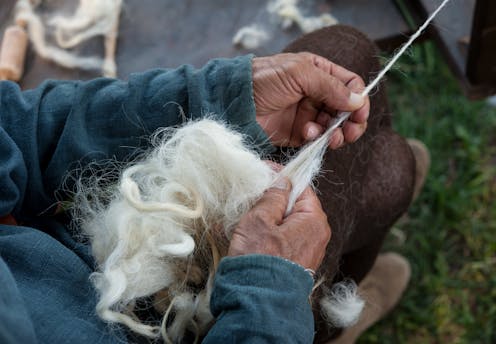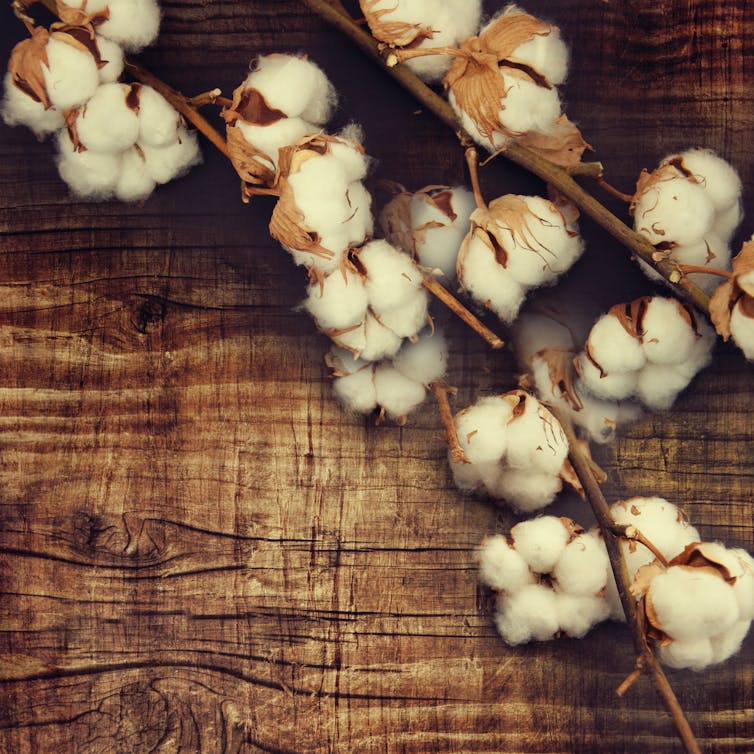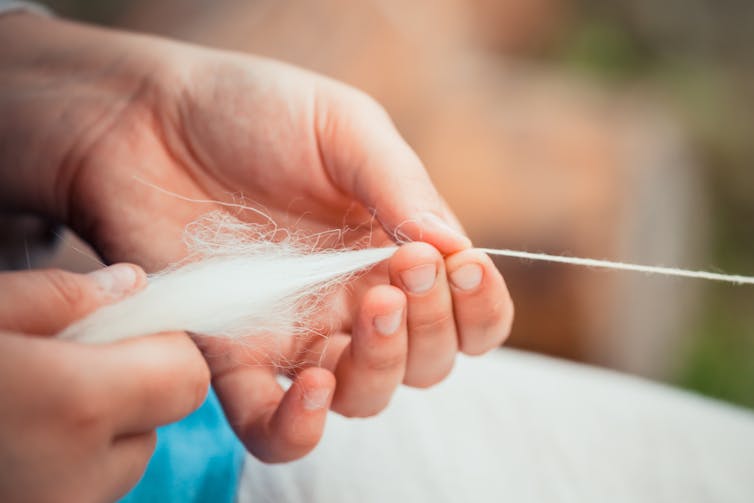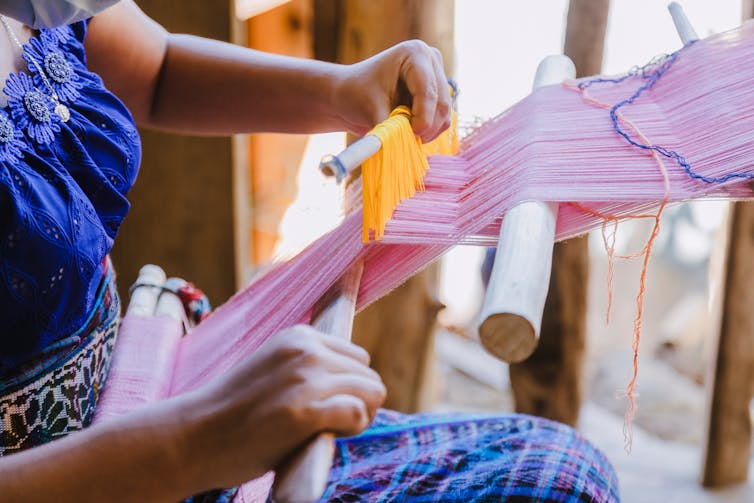Source: The Conversation (Au and NZ) – By Ken Aldren S. Usman, PhD Candidate, Deakin University

How is fabric made? – Saskia, age 5, Sydney
Hi Saskia, that’s a great question!
From clothes to curtains, towels and sheets, fabrics are everywhere in our daily lives. You might also hear people call them “textiles”.
People have been making fabric, or textiles, for a very long time. In fact, they’ve been doing it for almost 35,000 years!
Let’s first think about what a fabric is. The dictionary says fabric is a cloth made by knitting or weaving together fibres.
What is a fibre?
A fibre is like a strand of hair. It’s very long and thin.
Fibres can come from nature. Some common natural fibres are cotton, silk and wool.

Shutterstock
Humans have also found ways to make fibres ourselves in the past 150 years. We can use technology to turn oil into fibres. We can even make special fibres to make your raincoat waterproof, or make a soldier’s vest bullet-proof.
But how can these thin, hair-like fibres be made into something we can wear?
From fibre to yarn
First, we need to put the fibres together to make long strings of yarn. This can be tricky because many fibres are quite short, especially natural ones.
A cotton fibre is usually only around 3cm long. That’s shorter than a paper clip. Wool is usually cut from a sheep when it is 7.5cm long – about the length of a crayon.
We twist these shorter fibres together to make a longer yarn. The twisting makes the fibres rub together and grip to each other. This is called yarn spinning.
Yarn spinning
The first step of yarn spinning involves taking bundle of fibres, lining them up, them combing them like you comb your hair … or how you might comb a long beard! In fact, when we’ve combed them into a sheet, we call it a “beard”.

Shutterstock
Next, the sheet is stretched into a long tube. As it stretches, it becomes thinner and thinner. Then we twist it to form a yarn. This delicate sheet of fibres may have been metres wide to begin with, but we twist it into a thin thread.
There are all types of yarn threads. They can be thin, thick, hard, soft, stretchy, or even ones you can’t cut! It all depends on the starting fibre and the machine settings.
Turning yarn into fabric
Once we have our yarn, we’re ready to make fabric. There are many ways do this, such as weaving, knitting or felting.
Weaving crosses the yarns over and under in a chessboard pattern. Knitting makes loops that pass through each other.

Shutterstock
Felting is when we get wool fibres wet and soapy. We rub the fibres together until they are all tangled up. Then we press the fibres into a flat sheet called felt.
Weaving, knitting and felting can be very slow if you do them by hand! These days we often use machines to speed things up.
How fabric is made
So we start with the fibre. Then we spin it into long strings of yarn. Next we weave, knit or felt the yarn into fabric. And that, Saskia, is how we make fabric.
Hello, curious kids! Have you got a question you’d like an expert to answer? Ask an adult to send your question to curiouskids@theconversation.edu.au
![]()
Ken Aldren S. Usman receives funding from Deakin University’s Post-graduate Research (DUPR) Scholarship Grant.
Dylan Hegh receives funding from Australian National Fabrication Facility, IMCRC and Sustainability Victoria
– ref. Curious Kids: how is fabric made? – https://theconversation.com/curious-kids-how-is-fabric-made-178783









